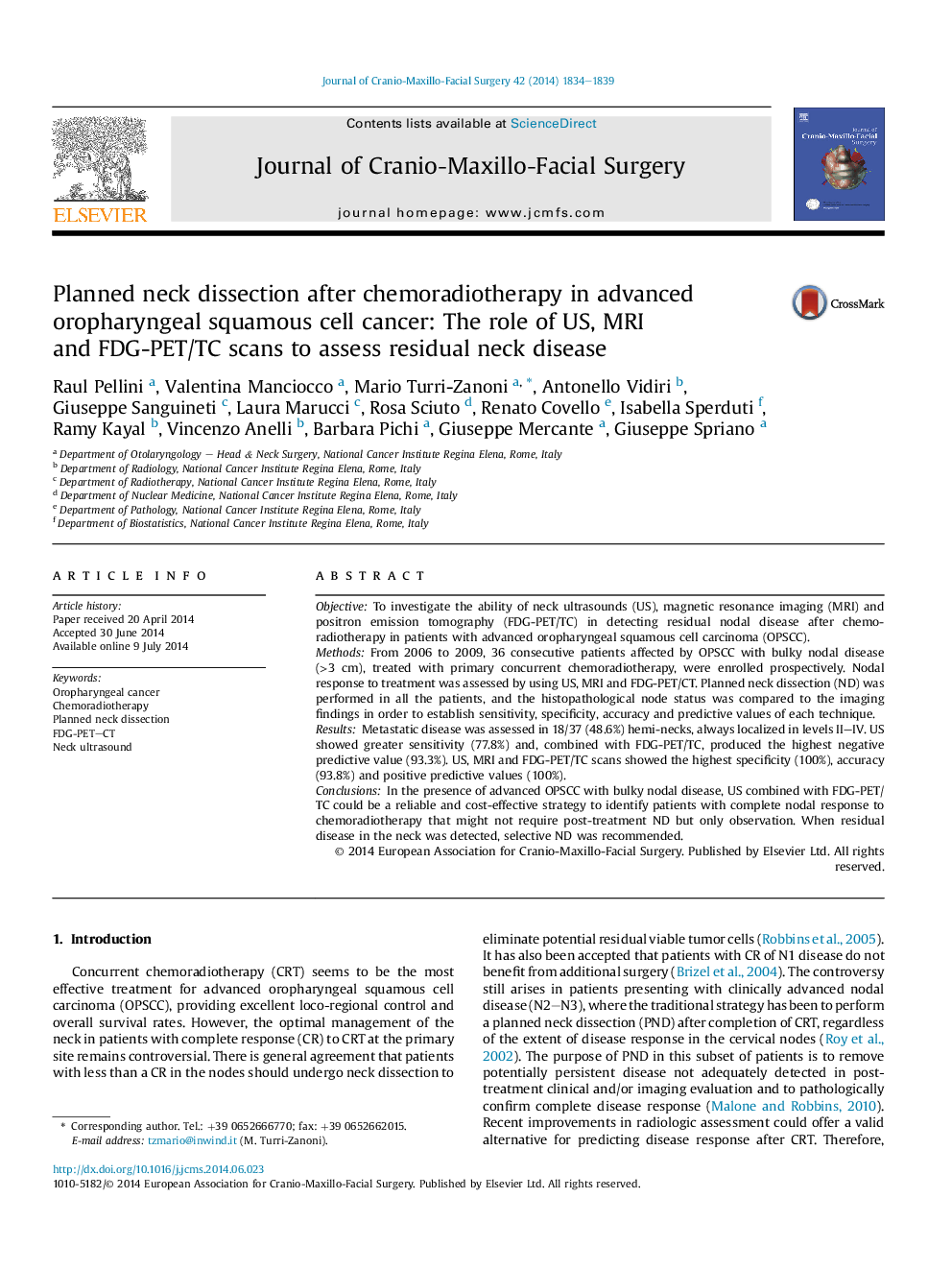| Article ID | Journal | Published Year | Pages | File Type |
|---|---|---|---|---|
| 3142752 | Journal of Cranio-Maxillofacial Surgery | 2014 | 6 Pages |
ObjectiveTo investigate the ability of neck ultrasounds (US), magnetic resonance imaging (MRI) and positron emission tomography (FDG-PET/TC) in detecting residual nodal disease after chemoradiotherapy in patients with advanced oropharyngeal squamous cell carcinoma (OPSCC).MethodsFrom 2006 to 2009, 36 consecutive patients affected by OPSCC with bulky nodal disease (>3 cm), treated with primary concurrent chemoradiotherapy, were enrolled prospectively. Nodal response to treatment was assessed by using US, MRI and FDG-PET/CT. Planned neck dissection (ND) was performed in all the patients, and the histopathological node status was compared to the imaging findings in order to establish sensitivity, specificity, accuracy and predictive values of each technique.ResultsMetastatic disease was assessed in 18/37 (48.6%) hemi-necks, always localized in levels II–IV. US showed greater sensitivity (77.8%) and, combined with FDG-PET/TC, produced the highest negative predictive value (93.3%). US, MRI and FDG-PET/TC scans showed the highest specificity (100%), accuracy (93.8%) and positive predictive values (100%).ConclusionsIn the presence of advanced OPSCC with bulky nodal disease, US combined with FDG-PET/TC could be a reliable and cost-effective strategy to identify patients with complete nodal response to chemoradiotherapy that might not require post-treatment ND but only observation. When residual disease in the neck was detected, selective ND was recommended.
